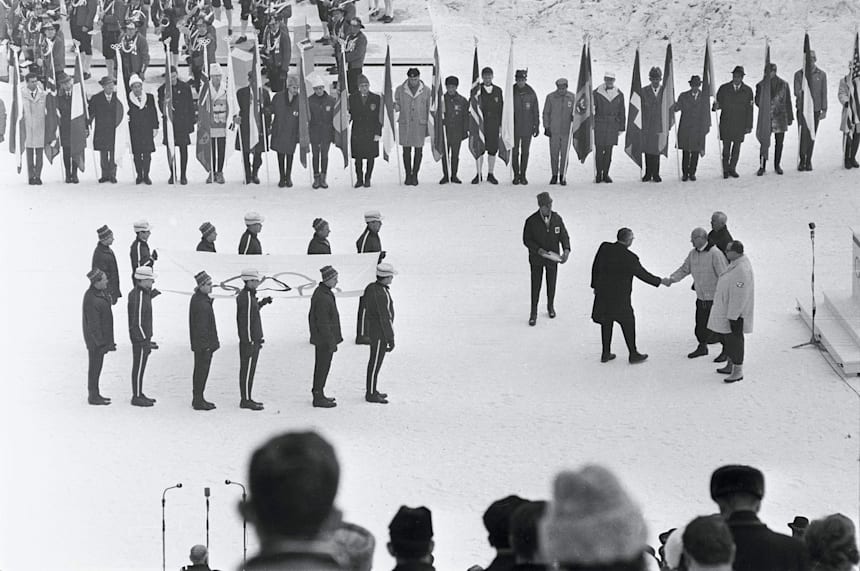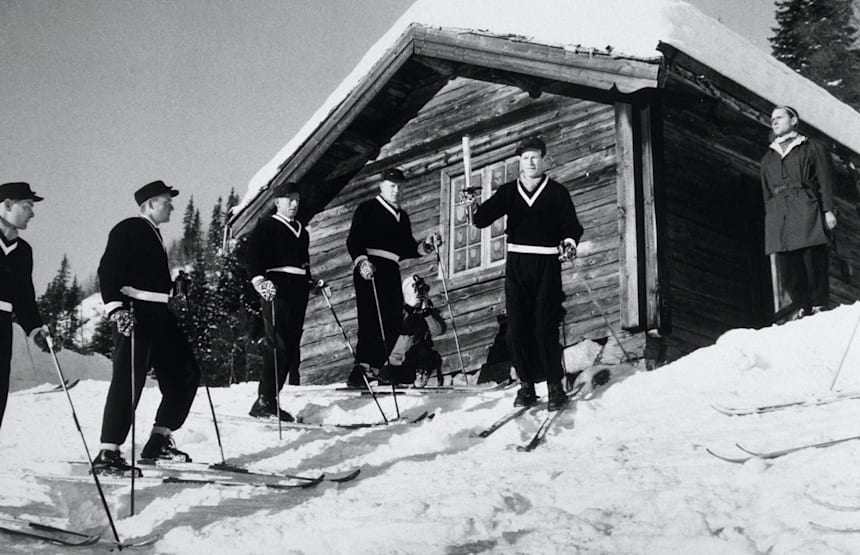Squaw Valley 1960: How it all began
Alexander Cushing, a landowner in Squaw Valley – an uninhabited valley overlooking Lake Tahoe and perched 1,900 metres above sea level in California’s Sierra Nevada and 300 kilometres east of San Francisco – dreamed of transforming the place into a world-class winter sports destination. His vision began to take shape when he built a lodge and then a ski lift in the middle of what was still an untamed landscape.
Then, in December 1954, Cushing read a newspaper article on the race to host the 1960 Olympic Winter Games. Despite facing competition from the likes of Reno in Nevada and Anchorage in Alaska , he decided that Squaw Valley should throw its hat into the ring.
Passionate, persuasive and driven by an unshakeable belief that the people of California would welcome the Winter Games with open arms, he attracted the support first of the state government, then the United States Olympic Committee and finally the US government through a Congress resolution signed by President Dwight D. Eisenhower himself. In the meantime, Cushing set about raising the sizeable funding needed to develop the Squaw Valley site.
The Californian resort presented its bid at the IOC’s 50th Session in Paris in June 1955. By this stage, the other cities in the running were Innsbruck (AUT), St Moritz (SUI), which had hosted the 1928 and 1948 Winter Games, and Garmisch-Partenkirchen (GER), the host city of the 1936 edition.

After advancing through to the second round of voting alongside Innsbruck, Squaw Valley won the decisive vote among IOC members by 32 to 30, thus earning the right to stage the 1960 Winter Games.
Starting from scratch
Under the guidance of the new Olympic Organising Committee, chaired by Prentis C. Hale, the land belonging to Cushing was leased out and construction work on the new venues and infrastructure began.
Though it was decided that the construction of a bobsleigh track would not be cost effective given the relatively small number of participants – a decision that led to the absence of the sport from the programme for the first and only time in the Winter Games’ history – Squaw Valley went in the space of less than five years from a largely undeveloped site to a fully equipped and accessible town.
Roads, bridges, administrative buildings, hotels, motels and restaurants all rose from the ground, while a sewage network and electric grid system was also installed along with a water treatment plant, with Reno Airport in nearby Nevada also being upgraded to an international airport following the construction of a new terminal.
You can return home as the world’s best-equipped ambassadors of unity and peace. Before we pay so much attention to conquering outer space, we should devote ourselves to conquering inner space: the distance between nations. Prentis C. Hale President of the Squaw Valley 1960 Olympic Winter Games - Prentis C. Hale President of the Squaw Valley 1960 Olympic Winter Games
For the first time in Winter Games history, an Olympic Village was purpose built for the occasion. Comprising four 75-bedroom buildings, it was designed to house more than 750 athletes.
Situated right at the centre of the resort, was the new 8,500-capacity Blyth Memorial Arena, which would host the Opening and Closing Ceremonies, the figure skating competitions and ice hockey matches. Hospitality facilities for spectators, officials and athletes were also constructed, along with a ski jumping hill, a 400m indoor ice rink and three outdoor rinks.

The downhill skiing runs on KT-22, Little Papoose Peak and Squaw Peak were also marked out and equipped with ski lifts, while McKinney Creek Stadium – the venue for the cross country skiing and biathlon events – was built in nearby Tahoma, on the shore of Lake Tahoe.
In a new landmark in media coverage of the Games, US TV station CBS introduced the instant replay, which would pave the way for another key feature of modern-day sports broadcasting: the slow-motion replay. Further innovations included a quartz clock accurate to one hundredth of a second, while the first computers were used to create and print out event standings.
Featuring on the official competition programme for the first time were biathlon and women’s speed skating, taking the number of Olympic Winter sports to eight (alongside ice hockey, figure skating, cross country skiing, Alpine skiing, Nordic combined and ski jumping) and the total number of events to 27.
A total of 665 athletes (521 men and 144 women) representing 30 countries, took part in the 1960 Winter Games, with South Africa making its debut appearance and Denmark, Argentina and New Zealand all returning to the Winter stage after a period of absence. The three largest delegations were provided by the USA with 79 athletes, the United Team of Germany with 74 and the Soviet Union with 62.
A fairy tale opening
Walt Disney, the world’s most famous cartoonist and animator, was put in charge of the Pageantry Committee for Squaw Valley 1960, his brief including the organisation of the Opening and Closing Ceremonies.
Disney oversaw the creation of the Tower of Nations, a huge metal structure topped by the Olympic rings, adorned with the crests of the participating nations and flanked on either side by two large snow statues, one of a female skier and the other of a male speed skater.
In front of this impressive structure was situated the Olympic cauldron, which would burn throughout the 11 days of the Games. It was in this grand setting that all the medal ceremonies would take place – the first time that they would be held in the same location – with the winning athletes taking to the podium in front of large crowds.
The Opening Ceremony took place on 18 February 1960, a day that began with a blizzard that delayed the arrival of US Vice President Richard Nixon. No sooner did the delegations of the participating nations assemble ahead of the parade than the skies miraculously cleared, with the sun continuing to shine for the rest of the day.
The delegations entered the stadium to the sound of a sustained drum roll, while the 30 flags representing them were hoisted on poles surrounding the Blyth Memorial Arena. After parading around the stadium, the athletes took their seats in the stands to watch the spectacle put together by Disney, which featured a cast of 5,000, a fireworks display, the release of 2,000 doves, eight ceremonial cannon shots fired in salute of the eight Olympic Winter Games held to date and the very first performance of the Olympic hymn, composed by Spiros Samaras and featuring words by Kostis Palamas.

Squaw Valley 1960 were the first Olympic Games to take place in the Space Race era, prompting Hale to make the following remarks in his speech: “You can return home as the world’s best-equipped ambassadors of unity and peace. Before we pay so much attention to conquering outer space, we should devote ourselves to conquering inner space: the distance between nations.”
Lit in Morgedal, Norway, at the home of the pioneering Telemark skier Sondre Nordheim, the Olympic flame was then flown to Los Angeles, where the US shot-putter Parry O’Brien began the relay that would eventually take it to Squaw Valley. Once there, it was handed to O’Brien’s compatriot, downhill skier Andrea Mead-Lawrence atop Little Papoose Peak. A two-time Olympic gold medallist at Oslo 1952, Mead-Lawrence then hurtled down the mountain before handing the torch to US speed skater Kenneth Henry, the then reigning 500m champion, who was given the honour of lighting the Olympic cauldron.
Figure skater Carol Heiss, who had won silver at the 1956 Winter Games, took the Olympic oath on behalf of all the athletes. After Vice President Nixon had declared the VIII Olympic Winter Games open, the Opening Ceremony came to a conclusion with the release of 30,000 balloons and a spectacular fireworks display.